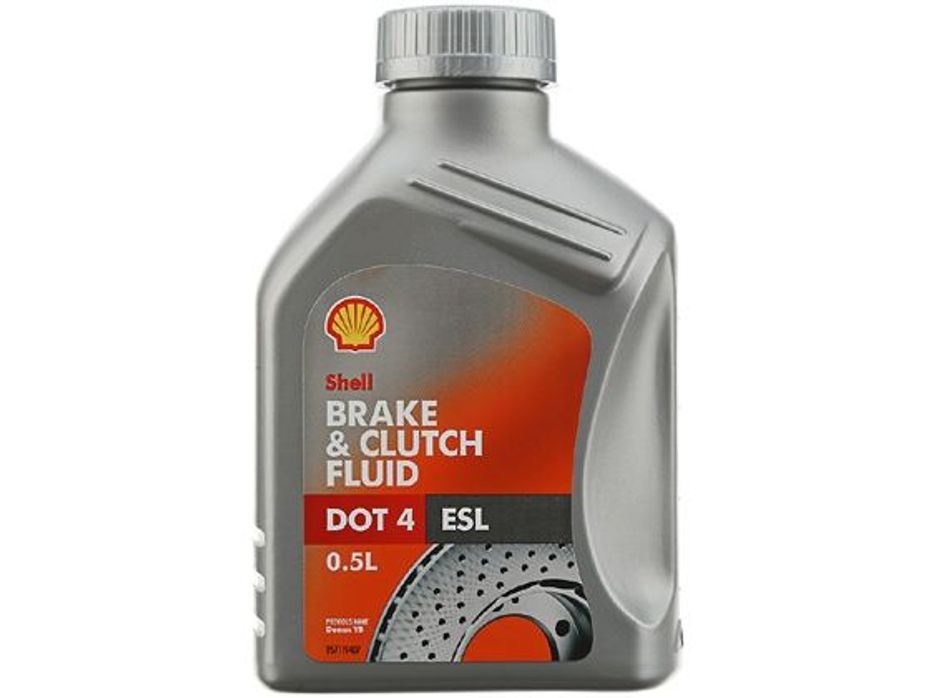 Budget 2025: More Fuel For Your Auto Dreams?
Budget 2025: More Fuel For Your Auto Dreams?
 Ola S1 Gen 3 Series Launched
Ola S1 Gen 3 Series Launched


Automobile braking systems work on hydraulics and a lubricating fluid called brake oil is necessary for them to function. Brake oil over the years has evolved greatly to ensure better operation and reliability of the system. The different types of brake oils according to their application include grades like DOT 3, DOT 4, DOT 5 and DOT 5.1. These types of brake oil listed correspond to their boiling points as they work in very high temperature and pressure environments. DOT 3 and DOT 4 brake oils are most commonly used in both India and internationally.
The boiling point of brake oil needs to be high to avoid vapourisation, as vapour is compressible and will hamper the effectiveness of a hydraulic system. Vapour in the hydraulic system will also result in pressure differences which in the case of brake oil can cause problems like juddering. This can also cause uneven pressure differences in the brake system and can lead in rupturing of the brake lines. Over time, due to moisture content in the atmosphere brake oil absorbs moisture. The boiling point of brake oil after absorbing moisture is known as its wet boiling point.
DOT 3, DOT 4 and DOT 5.1 are able to absorb water to an extent (hygroscopic) under normal humidity levels. DOT 5 is silicon based and cannot absorb water (non-hygroscopic). DOT 5 brake oil is not compatible with anti-lock braking systems. Silicone brake oil, which contains additives that prevent the oil from becoming sludgy under low temperatures, is used in very cold climates.
Most modern cars, if not all, come with brake fluid reservoirs that allow one to see through so you can check on the level of brake fluid without physically opening the cap. Usually, the reservoir is located on the engine firewall or towards the back of the engine bay towards the driver’s side. The reservoir is also higher up in the engine bay so that it is easily accessible. Once you locate the reservoir, it is easy to identify certain markings on it to know if you need to fill more brake fluid or if it is at an acceptable level. As the container is in the engine bay and is often exposed to elements like grime, heat and oil, one might need to clean off a little grime on it to ensure correct levels.
Brake oil must be changed every two years as the oil gets saturated with moisture. The moisture content can also corrode seals and metal inside the braking system. Old brake oil is flushed out completely and replaced with new oil. Always remember to bleed the brake system of all air bubbles before using the car. Forgetting to bleed the brake system can lead to catastrophic brake failure and can result in an accident.
Ensure an adequate level of brake oil is refilled according to the marking on the container located in the engine bay. If the level drops, top up with the grade of brake oil recommended by the car manufacturer. Always remember to thoroughly clean the rim of the container and the cap before putting it back on to ensure no stray particles enter the reservoir. Do not use brake oil from an opened bottle as it will have absorbed moisture from the atmosphere. Wash off any brake oil residue that might have spilled in the engine bay while refilling as it can corrode the paint.
India's largest automotive community
 MG Astor First Drive Review: Standing Out In Style
MG Astor First Drive Review: Standing Out In Style
 2021 Mahindra XUV700: First Drive Review
2021 Mahindra XUV700: First Drive Review
 Kia Sonet Driven: More Than Just A Great Brochure?
Kia Sonet Driven: More Than Just A Great Brochure?
 Kia Syros
Rs. 8.99 Lakh
Kia Syros
Rs. 8.99 Lakh
 Vayve Mobility Eva
Rs. 3.25 Lakh
Vayve Mobility Eva
Rs. 3.25 Lakh
 BMW X3
Rs. 75.80 Lakh
BMW X3
Rs. 75.80 Lakh
 Hyundai Creta Electric
Rs. 17.99 Lakh
Hyundai Creta Electric
Rs. 17.99 Lakh
 Lotus Emira
Rs. 3.22 Crore
Lotus Emira
Rs. 3.22 Crore
 Mahindra XUV700
Rs. 13.99 Lakh
Mahindra XUV700
Rs. 13.99 Lakh
 Skoda Kylaq
Rs. 7.89 Lakh
Skoda Kylaq
Rs. 7.89 Lakh
 Maruti FRONX
Rs. 7.51 Lakh
Maruti FRONX
Rs. 7.51 Lakh
 Maruti Brezza
Rs. 8.34 Lakh
Maruti Brezza
Rs. 8.34 Lakh
 Mahindra Scorpio
Rs. 13.61 Lakh
Mahindra Scorpio
Rs. 13.61 Lakh